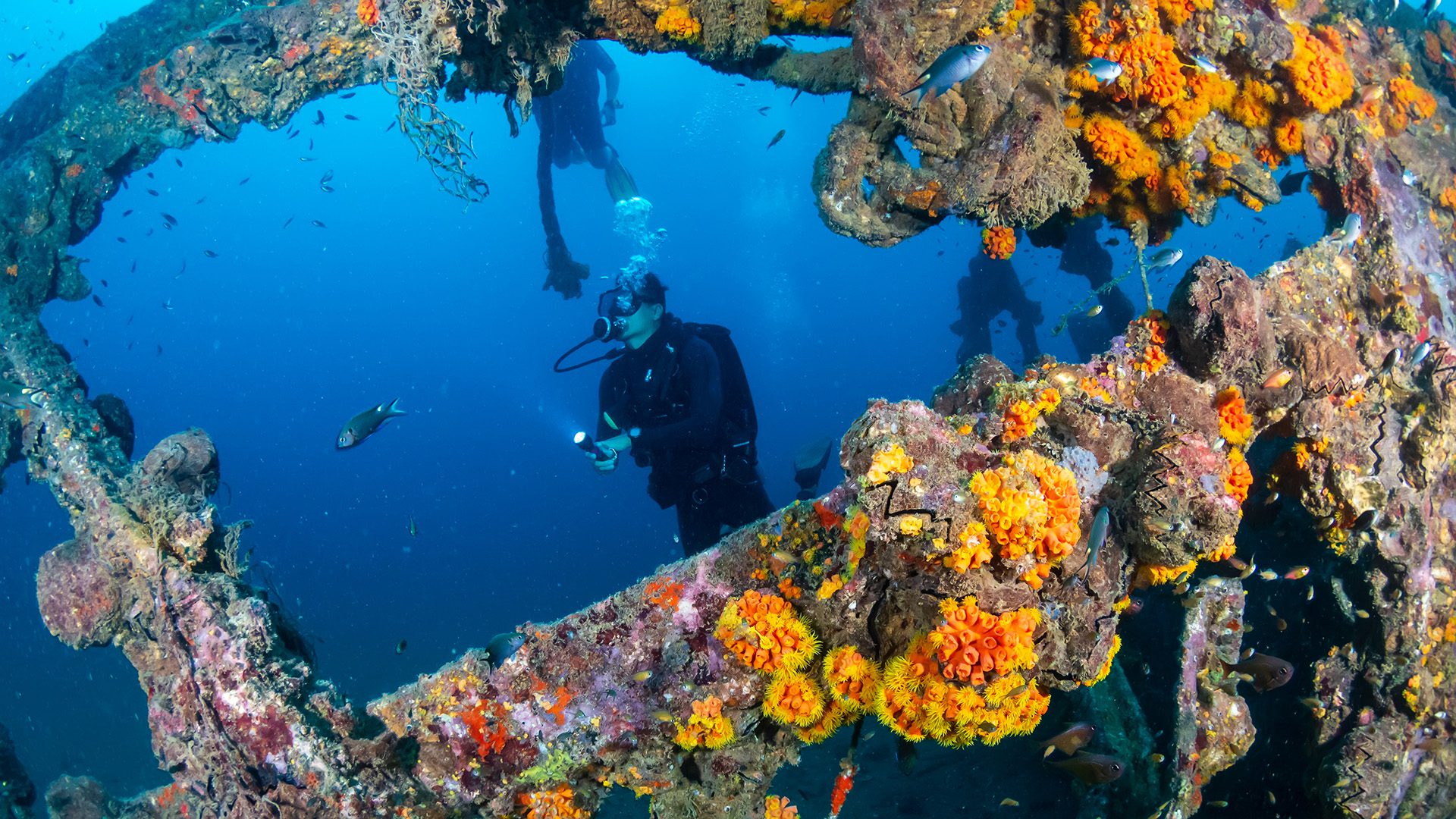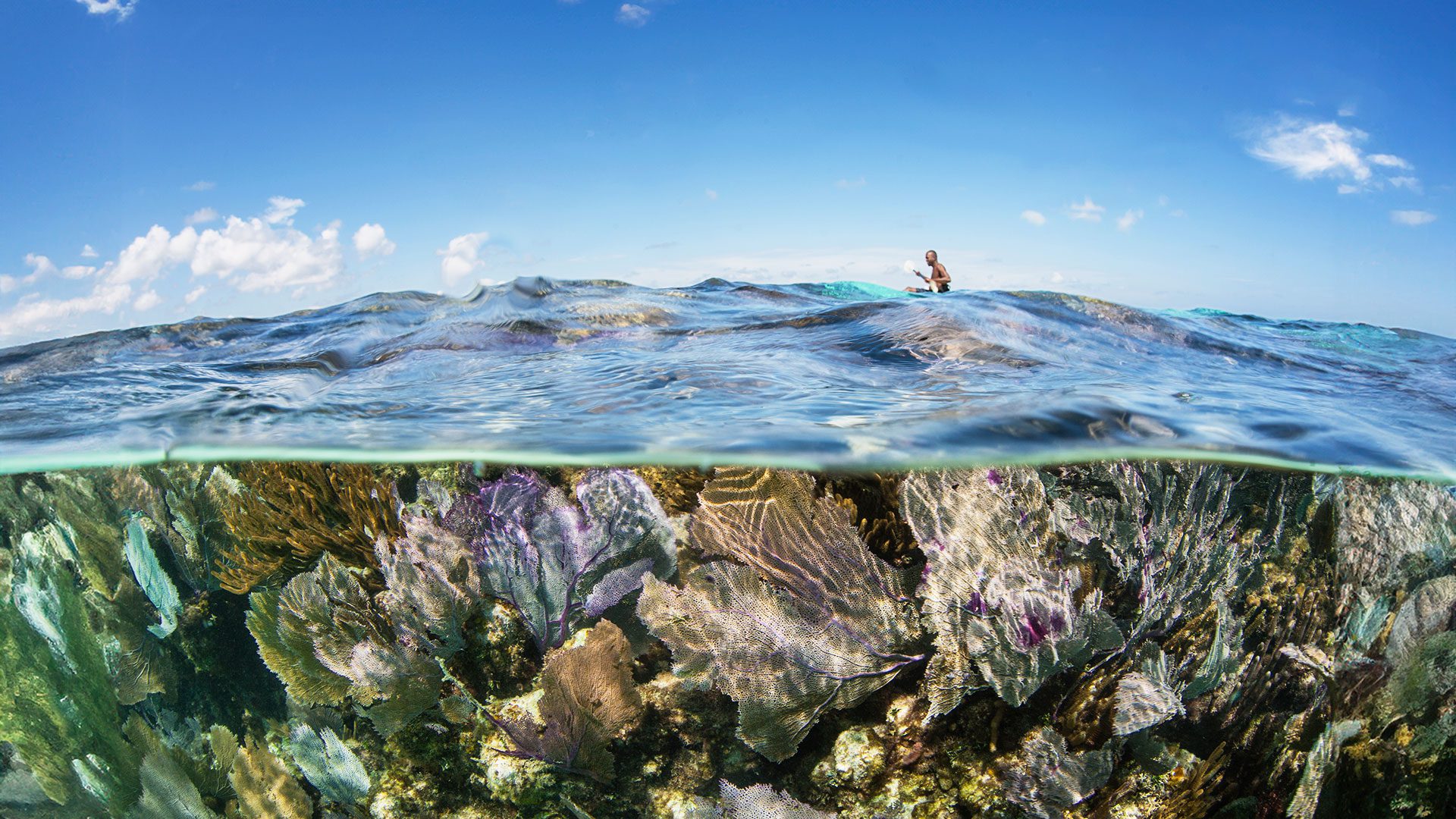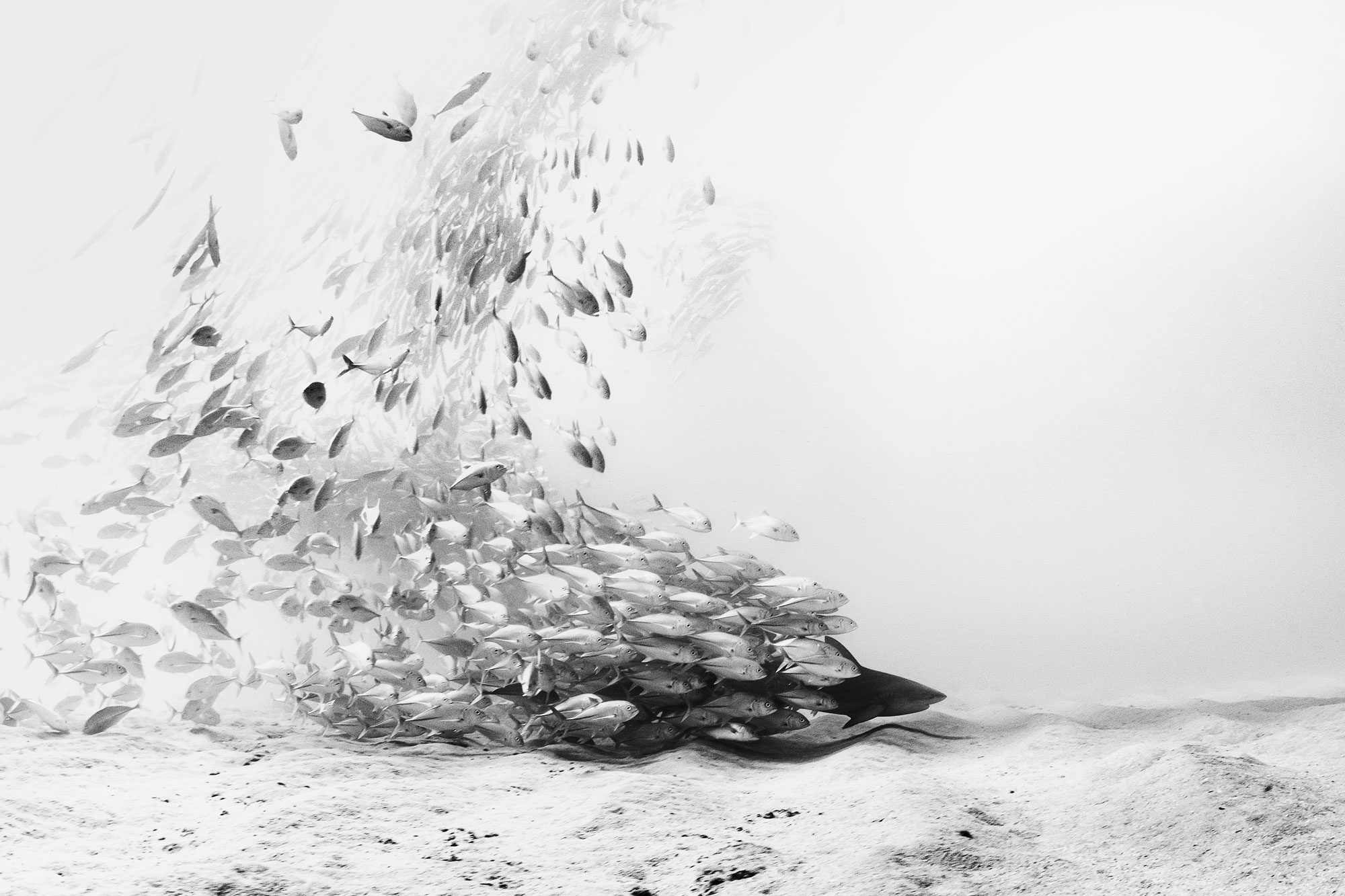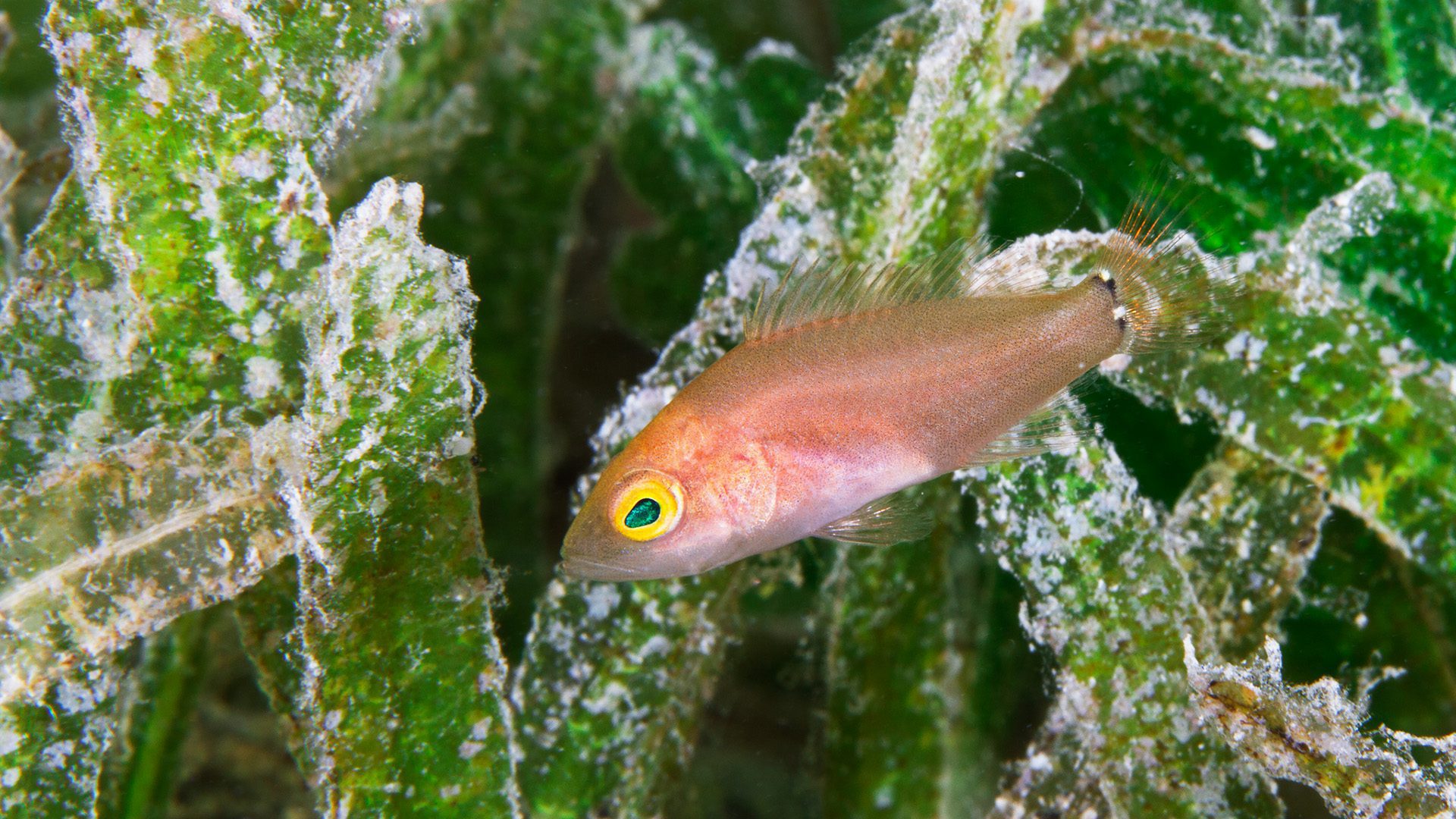
Tracking dispersal of baby fish for better reef conservation
To improve marine protected areas, WHOI scientists study the traffic patterns of juvenile reef fish
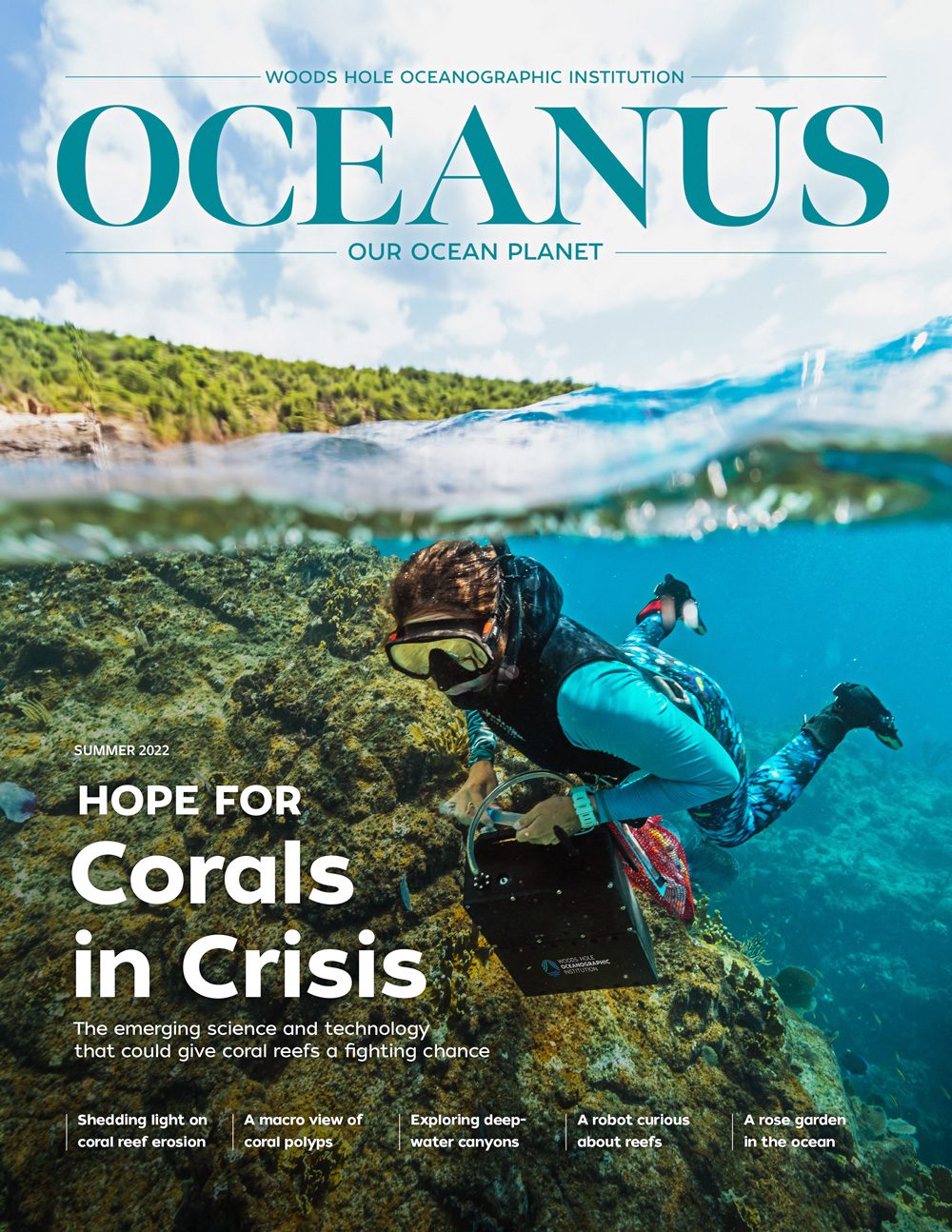 This article printed in Oceanus Summer 2022
This article printed in Oceanus Summer 2022
Estimated reading time: 4 minutes
WITH MARINE ECOSYSTEMS FACING ENORMOUS THREATS INCLUDING CLIMATE CHANGE AND OVERFISHING, understanding the littlest things can help to inform efforts to protect fish, fisheries, and coral reefs.
Among those little things are the thousands of offspring that reef fish produce.
Tracking the patterns of how larval reef fish disperse in the open ocean can provide important data to feed into spatial management tools such as marine protected areas (MPAs).
The dispersal of larvae and their role in maintaining connectivity between isolated reefs “are critical to maintaining fish populations between reef ecosystems,” says Christina Hernández, a postdoctoral associate at Cornell University’s Department of Ecology and Evolutionary Biology, and a guest investigator at the Woods Hole Oceanographic Institution.
“Being able to quantify how much larval movement is happening, where it is happening, and what are the patterns of connectivity, potentially on a reef-by reef-basis is critical for understanding how effective protection measures such as MPAs might be,” she says.
That’s a complicated task because larval dispersal can vary widely in space and time depending on species. Adding to this, the ocean is huge and has complex dynamics.
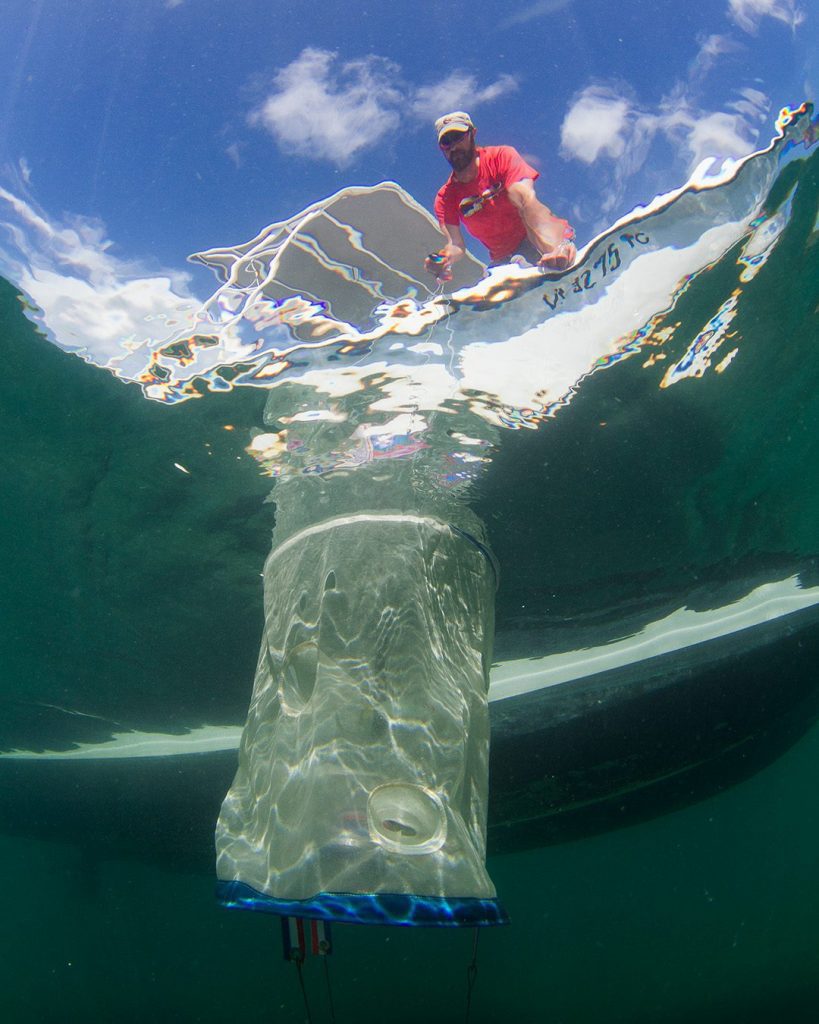
WHOI biologist Joel Llopiz deploys a light trap net to catch and study larval fish as they transition from open waters to reefs, mangroves, or other juvenile habitats. (Photo by Paul Caiger, © Woods Hole Oceanographic Institution).
“It’s weird to think about these tiny little things drifting in the open ocean as being critical to reefs and their health,” says Joel Llopiz, an associate scientist in WHOI’s Biology Department. However, unlike their days-old progeny, most adult fish on a reef don’t move very far, he says. “If there is any change to the numbers of fish on a given reef, whether from fishing, climate change, or some other cause, the only way to replenish a degraded reef is largely through larval input from somewhere else. This highlights the interconnectedness of these habitats.”
Using techniques such as DNA sequencing, chemical marking, and computer modeling, scientists have a good sense of larval dispersal for just a few of the thousands of reef species. An optimal design for a network of MPAs would consider the varying distances that different larvae may be dispersing. However, tracking every single species would be very difficult and costly.
“Since we don’t know how representative the studied species are, general theories about dispersal and a recognition of trade-offs can help,” says Hernández. “We can’t necessarily protect every single species and every single reef. So, how we manage MPAs starts to get into ethical questions such as what are the goals and what do we actually want to protect.”
Because there probably isn’t a right MPA design to protect every species, there will always be trade-offs, says Simon Thorrold, senior scientist in WHOI’s Biology Department. “The more we understand the trade-offs, the better job we can do in terms of deciding how to balance those trade-offs.”
Sometimes, marine spatial management has provided good results in determining which reefs to close and which to keep open for fishing, says Thorrold. However, he says that “the reality is that marine reserves often get put in the areas where there is the least political resistance because they are relatively unproductive areas of the ocean. Protecting an area that doesn’t have a lot of fish is not necessarily doing a whole lot.”
"It’s weird to think about these tiny little things drifting in the open ocean as being critical to reefs and their health"
——WHOI associate scientist Joel Llopiz
With technologies such as GPS, miniaturized electronic tags, new earth-orbiting satellites, and high-resolution hydrodynamic models, now we have an opportunity to spatially manage the ocean in ways that we have never been able to before, says Thorrold. To make the most of that technology, he says people need to know some basic information about the fish they are managing.
Larval dispersal for coral reef fishes “really is the critical component of what hopefully will lead to new spatial management techniques that allow us to do a better job of optimizing both conservation and food security for people who live near reefs,” he says. “The more stress that these fish are under, the better job that our management structures have to do if we are going to be able to sustain these populations.”
Funding for Llopiz and Hernández was provided by the National Science Foundation, including a Graduate Research Fellowship awarded to Hernández while she was a graduate student in the MIT-WHOI Joint Program, as well as NOAA’s Cooperative Institute for the North Atlantic Region, the Adelaide M. and Charles B. Link Foundation, the J. Seward Johnson Endowment in support of WHOI’s Marine Policy Center, the Lenfest Fund for Early Career Scientists, and the Early Career Scientist Fund at WHOI.

